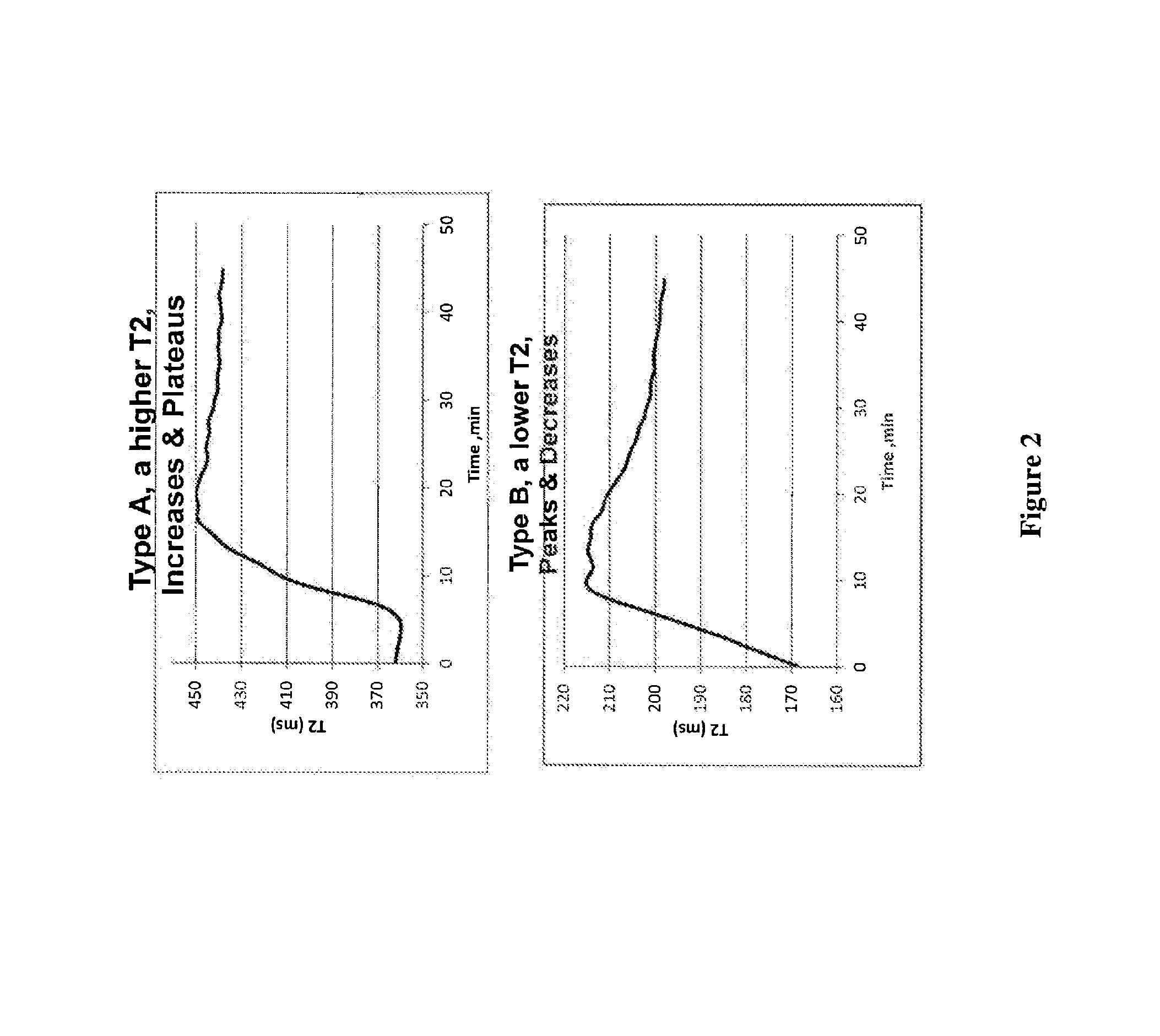Nmr methods for monitoring blood clot formation
a technology of blood clot and nmr, which is applied in the field of monitoring rheological changes, can solve the problems of dramatic risk of hemorrhage and patient may remain at risk, and achieve the effects of reducing the risk of bleeding or clotting
- Summary
- Abstract
- Description
- Claims
- Application Information
AI Technical Summary
Benefits of technology
Problems solved by technology
Method used
Image
Examples
example 1
Monitoring the Blood Clotting Process Using Whole Blood Samples
[0232]The clotting process was monitored using fresh citrated or heparinized whole blood samples. Several different activation pathways were examined
[0233]For the kaolin activation pathway (CK pathway), 1 mL of citrated blood was added to a kaolin vial (PlateletMapping assay kit, Haemonetics). The vial was inverted five times to mix the sample. 34 μL of the blood / kaolin mix was transferred into a 200 μL PCR tube pre-heated at 37° C. 2 μL of the 0.2M CaCl2 was added to the PCR tube and the T2 measurement was started immediately.
[0234]For the activator pathway (A pathway), 1 μL of freshly prepared activator solution (A-P1, PlateletMapping assay kit, Haemonetics, also referred to herein as “RF”) was added to a 200 μL PCR tube pre-heated at 37° C. 36 μL of blood collected in a heparinase vial was added to the PCR tube and the sample was mixed with a pipette tip 3-4 times. The T2 measurement was started immediately.
[0235]For ...
example 2
Data Extraction Using an Algorithm for Interpreting Blood Clotting in a Sample
[0237]The data output from the T2reader of Example 1 was processed using a three-step method of performing a bi-exponential fit, plotting and checking, and feature extraction:
[0238]Bi-Exponential Fit
[0239]The read time was registered by NDXClient. The complex y data was converted to magnitude and normalized. The initial 25 milliseconds of x and y was removed. Each relaxation curve was fit using the default non-linear least square method. The curves were fitted to a bi-exponential equation using start points (e.g., seeds) for AmpA, AmpB, T2A, and T2B with fixed seeds used for the first five time points. The seed for the sixth time point was obtained from the average of the first five time points. Generally, time points were seeded with output from the previous time point. Negative values for parameters were not allowed. Alternatively, the data can be fit initially in the middle of the time series, working s...
example 3
Use of a Capillary Method for Measuring Clotting Behaviors
[0244]A capillary tube was used to collect a 2- to 5-μL blood sample from a patient. The blood sample was collected from a fingerstick using a lance, and the sample was collected into a heparinized capillary tube and capped with clay. Alternatively the blood was collected in a pyrex tube and capped with clay. Alternatively the blood sample was collected in a glass Dagan capillary tube and capped with clay and did not contain an activator. Data for T2 NMR relaxation rate was recorded from the capillary sample using a T2reader. It was determined that the collected data was monoexponential and that this may reflect a different clot structure than is present in standard CK curves. Presumably, the surface of the capillary induces blood clotting.
PUM
 Login to View More
Login to View More Abstract
Description
Claims
Application Information
 Login to View More
Login to View More - R&D
- Intellectual Property
- Life Sciences
- Materials
- Tech Scout
- Unparalleled Data Quality
- Higher Quality Content
- 60% Fewer Hallucinations
Browse by: Latest US Patents, China's latest patents, Technical Efficacy Thesaurus, Application Domain, Technology Topic, Popular Technical Reports.
© 2025 PatSnap. All rights reserved.Legal|Privacy policy|Modern Slavery Act Transparency Statement|Sitemap|About US| Contact US: help@patsnap.com



